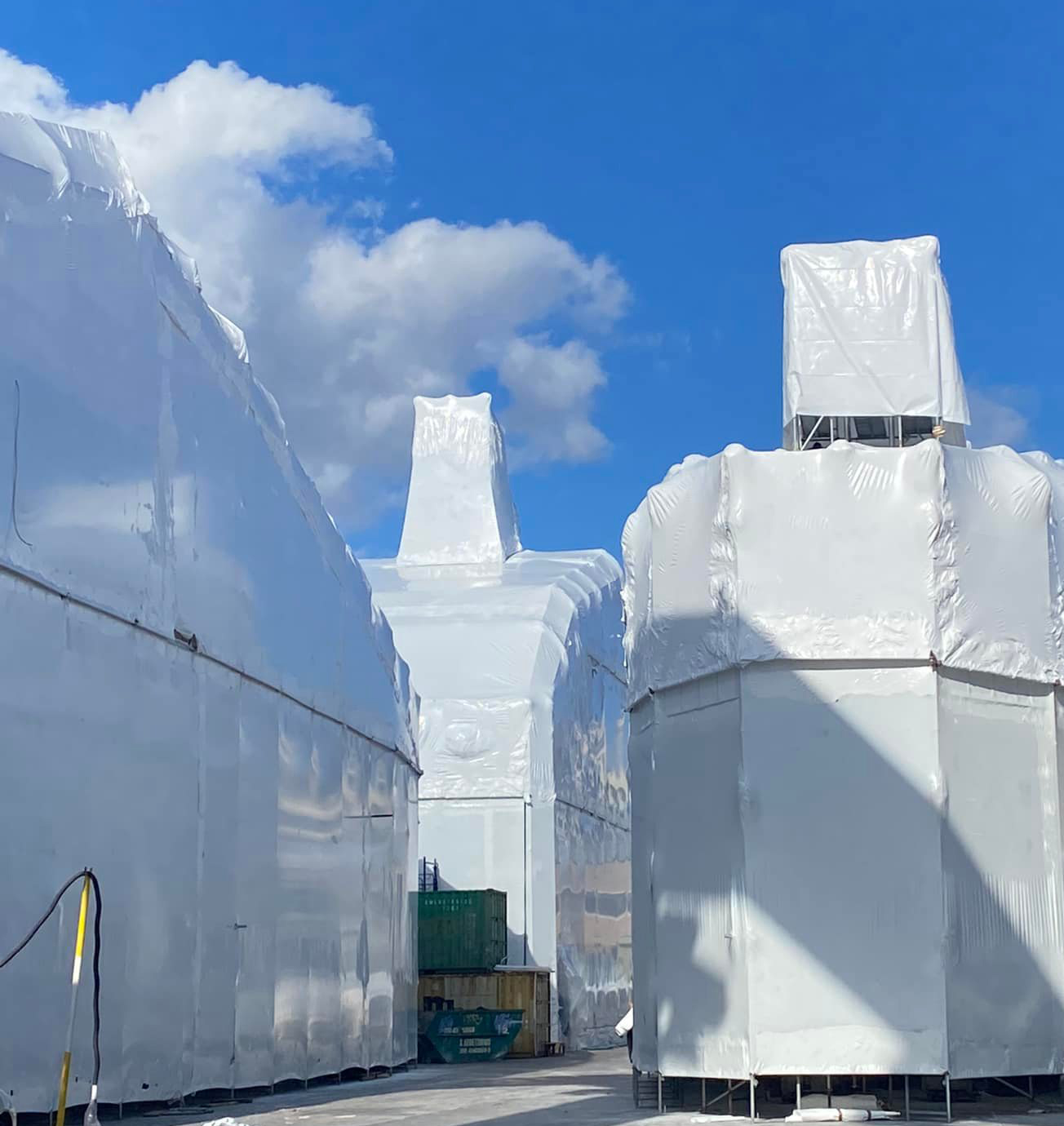
Shrink wrap for a long time was considered a material for exclusive use in marines, yachts and boats. Sooner or later, it was recognized as a robust and adaptable material widely utilized across various industries, such as transportation, construction, scaffolding, and roofing. Its ability to conform to different shapes and provide a waterproof barrier makes it invaluable in protecting goods and structures.
Transportation
In the transportation sector, shrink wrap is often used to safeguard vehicles, machinery, and other equipment during transit. For instance, when transporting heavy machinery, delicate items professionals often wrap them in shrink wrap to protect them from environmental elements like moisture, dust, and UV rays. This extends the life of the items by preventing corrosion and wear. Additionally, the tight fit of the shrink wrap minimizes movement and potential damage while in transit, ensuring that items arrive at their destination in pristine condition.
Construction
In construction, shrink wrap serves multiple functions. It's commonly used to create temporary enclosures around buildings under renovation. This method not only protects workers from weather, but also contains debris and dust, enhancing safety and cleanliness at construction sites. For example, during a large-scale renovation, contractors may use shrink wrap to cover the entire structure, maintaining a controlled environment that can be heated or cooled as necessary. Also not only elevates the esthetic when the construction takes place in town, close to crowdy streets, but also protects pedestrians from debris and dust.
Scaffolding
Shrink wrap applied to scaffolding is another innovative use. It can create protective barriers around the scaffolding structure, shielding workers from falling debris and adverse weather conditions. This is particularly beneficial in urban construction sites where safety regulations are strict. The wrap acts as a windbreak, ensuring that scaffolding remains safe and secure for workers at height.
Roofing
In roofing applications, shrink wrap can be used to protect sensitive materials from inclement weather. Roofing contractors often cover materials like shingles or insulation with shrink wrap during installation breaks. This prevents water damage and ensures that these materials remain dry and ready for use. Additionally, in emergency repairs, shrink wrap can be applied temporarily to cover leaks until permanent solutions are implemented.
We break the Myth
From protecting vehicles during transport to ensuring safety and cleanliness on construction sites, shrink wrap is an essential tool across various industries. Its versatility and effectiveness make it a favored choice for professionals looking to safeguard their investments and maintain operational efficiency. As industries continue to evolve, the applications of shrink wrap are likely to expand, further solidifying their role as a crucial material in modern practices.
